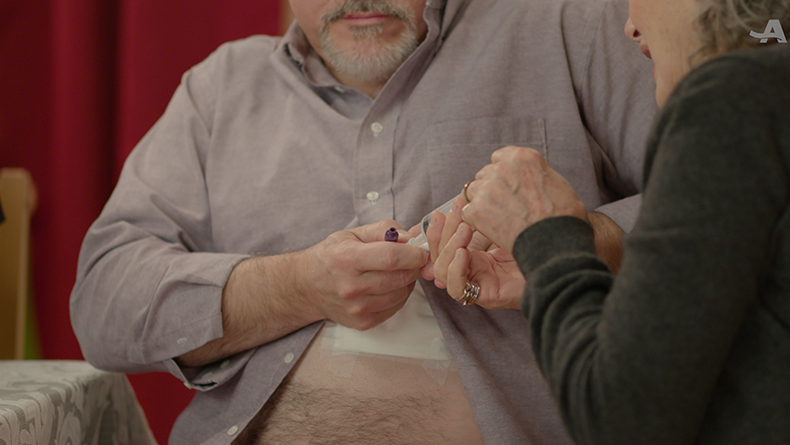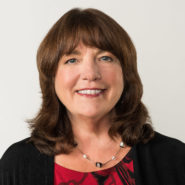AARP Hearing Center
Latest How-To Videos for Family Caregivers Provide Guidance on Complex Medical Tasks
By Susan Reinhard, September 16, 2019 12:25 PM

Complex medical and nursing tasks are no longer the domain of health care professionals. Today 20 million family caregivers regularly perform such tasks for family members or friends. Yet what we’ve known for some time is that these caregivers may be getting limited to no instruction on how to execute these tasks when the care recipient leaves the hospital. In addition, the tasks these caregivers are performing—everything from wound care and preparing special diets, to managing medications and incontinence—are getting increasingly more complex.
With this in mind, in 2016 we created the Home Alone Alliance, a partnership of public, private, and nonprofit organizations formed to change the way health care organizations and professionals interface with family caregivers. One particular Home Alone Alliance initiative that has been especially successful is the development of multiple series of “How-To” videos and accompanying resource guides that we’ve created to provide family caregivers with concrete demonstrations and guidance on specific tasks. The videos and resources, many of which are available in both English and Spanish, are free of charge.
Stream of New Releases
New video releases keep coming in order to meet this tremendous need. The topics of two recent releases stem from work related to the AARP Public Policy Institute's (PPI) 2019 report Home Alone Revisited, which I co-authored. The report revealed that both managing special diets and managing incontinence are two highly important tasks that family caregivers often perform that not only can be challenging, but have broader implications. That’s why the Home Alone Alliance is tackling those topics in its latest releases.
Not too long ago, I attended a conference in Rome that highlighted the range of issues surrounding caring for someone will incontinence. While I was aware of the issue concerning lack of training, the conference opened my eyes to an even greater extent on the necessity of finding solutions. For example, it’s difficult simply for a family caregiver to know which products to buy for a loved one because there are no standards and very limited direction and guidance. Moreover, issues associated with incontinence can have much broader implications. “Dealing with all these incontinence challenges without the proper guidance and supports can be the straw that breaks the camel’s back for caregivers,” notes my colleague Andrea Brassard, a PPI senior advisor. “It can force a family caregiver into the difficult decision to seek out nursing-facility care for their loved one.”
In response to the range of issues associated with incontinence, a seven-video series tackles subjects including managing incontinence at home, helping someone to the toilet, and selecting incontinence products.
Preparing meals for a loved one on a special diet is another challenge for family caregivers. Our instructional six-video series on special diets, funded by the Ralph C. Wilson Jr. Foundation, includes videos on reducing sodium, modifying food textures, and managing low appetite, among others.
For each video in both the special diets and managing incontinence series, there’s a corresponding resource guide. The resource guides go deeper into each topic and point readers to additional resources.
This fall we will expand the video library still further as well as work to keep making them better. New releases coming soon include an update on the medication management series, which will include a video on using an inhaler properly, and another on taking complicated medications, such as anticoagulants. These videos will be our first to be translated into traditional Chinese.
Also in the works is a new series on helping family caregivers navigate health systems. This series, which is funded by the The John A. Hartford Foundation, will be informed by the Institute for Healthcare Improvement Age-Friendly Health Systems initiative. Finally, the Retirement Research Foundation is funding another new series—one to help family caregivers operate specialized medical equipment.
As we expand the set of offerings, we continue to look for areas of improvement. Further plans include holding online focus groups with family caregivers to get feedback on the videos.
Just a Start in Meeting a Need
We know, of course, that videos are no replacement for in-person teaching of medical-nursing tasks. Family caregivers need more guidance from nurses to perform these increasingly complex tasks. That’s why the Home Alone Alliance also has partnered with the American Journal of Nursing (AJN), the nursing profession’s premier journal. Through the partnership, each video topic is accompanied by free AJN articles that teach nurses how best to teach these medical-nursing tasks to family caregivers.
Yet in spite of all the progress on getting family caregivers the information and skills they need, plenty of work remains. In fact, as proud of the series as we are, we hope that it serves as a catalyst for further video development elsewhere. We welcome, and even urge, other organizations to help move the needle by providing more how-to guidance tools for family caregivers. They, and their care recipients, are counting on us.

Susan Reinhard, RN, PhD, FAAN, is a senior vice president at AARP, directing its Public Policy Institute, the focal point for AARP’s public policy research and analysis. She also serves as the chief strategist for the Center to Champion Nursing in America, a resource center to ensure the nation has the nurses it needs.































































